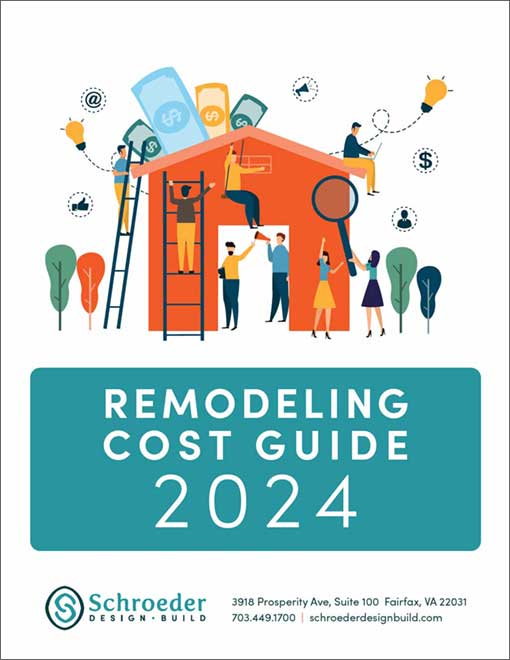Why are more families across the U.S. choosing to live under one roof? From grandparents helping with child care to adult children returning home, multigenerational living is becoming more popular than ever. But it’s not just about convenience. This growing lifestyle trend is rooted in shifting family dynamics, financial realities and cultural values. If you’re wondering what’s driving this change and how it’s reshaping the way people live, in this post we’ll explore the factors behind the rise in multigenerational households.
The Major Growth of Multigenerational Households
Multigenerational households—where two or more adult generations live under one roof—are becoming increasingly common in Northern Virginia and across the U.S. These households may include parents sharing a home with adult children or even “skipped generation” families, where grandparents are raising grandchildren without the parents present. This living arrangement reflects a shift in how people redefine “home” as families seek ways to support one another both emotionally and financially.
Since the 1970s, the population of Americans living in multigenerational households has quadrupled. According to the Pew Research Center, those living in multigenerational households more than doubled, from just 7% in 1971 to 18% in 2021. This means nearly 1 in 5 people in the U.S. now live in a multigenerational home—an estimated 59.7 million as of March 2021. This demonstrates just how more common and accepted this lifestyle has become.
The reasons behind the trend are as varied as the households themselves. Economic factors like rising housing costs and student debt prompt many families to combine resources, while caregiving needs for both aging parents and young children also play a major role.
“Whole house remodeling gives families the flexibility to create a home that works for everyone, no matter their stage of life,” explains Andrew Schroeder, owner of Schroeder Design Build. “We’re seeing more and more families asking for home remodels that can accommodate multiple generations living under one roof and offer comfort, privacy and functionality at the same time.”
Why is Multigenerational Living Becoming More Popular?
Multigenerational living is becoming more popular across the United States, and the numbers reflect a major cultural shift. In 1971, just 14.5 million Americans lived in multigenerational households. By 2021, that number had grown to 59.7 million. The trend accelerated during the Great Recession and continues to rise as families look for smarter, more connected ways to live.

At Schroeder Design Build, we’ve worked with countless families who choose to remodel not just out of economic necessity, but because families want to stay close,” Schroeder says. “Whether it’s having grandpa nearby to help with kids or adult children in transition, multigenerational homes are helping people reconnect in meaningful ways.”
This renewed focus on togetherness is shaping the ways homes are designed. Families ask for flexible living spaces, separate suites and open communal areas that bring people together while still allowing for privacy. This shift creates modern, functional homes that reflect how Americans live today—as a family and as a team.
Economic Pressures Driving Shared Living Arrangements
Economic realities play a major role in the rise of multigenerational households. During economic downturns, many families turned to shared living arrangements as a way to stabilize their finances. By pooling income and cutting down on duplicate expenses like rent, mortgages and utilities, families found they could make smarter use of their money.
One of the biggest shifts is among young adults. From 1971 to 2021, the share of adults ages 25 to 34 living in multigenerational households jumped from 9% to 25%. This surge is largely driven by student debt, rising housing costs and stagnant wages that make it hard to achieve financial independence. Adult children stay in or return to parents’ homes to save money, pay down loans or build up income before taking on the costs of their own mortgage or rent.
Democratic Shifts and the Rise of Multigenerational Homes

As the U.S. population changes, so do the ways people live together. Multigenerational households are becoming a practical and often necessary living arrangement across all age groups. According to USA Facts, in 2020:
- 4% of children under 18 lived in multigenerational homes
- 8% of young adults ages 18-24
- 1% of adults ages 25-64
- 5% of adults over 65 (with 20% of women compared to 15% of men)
These numbers reflect a broader trend: more American adults are sharing homes with family members across generations. For young adults and adults, delayed milestones like later marriages, longer school stays and delayed entry into the full-time workforce reshape their living arrangements. In fact, data from the 2021 Current Population Survey shows that 37% of men and 25% of women ages 25-29 were most likely to live in multigenerational households. Among a broader group of young adults (18-34), living with parents has been the dominant living arrangement for men for more than a decade. Young women are more likely to head their own household, often as single parents, while young men more commonly live with parents or other family members, non-relatives or in group quarters like dorms.
Older generations are also impacted. While only 6.5% of adults over 65 live in multigenerational homes, this number rises to 20% for women compared with 15% of men, reflecting not only their longer life expectancies, but also economic realities. In 2021, 11.2 million older adults were considered housing cost-burdened, spending more than 30% of their income on housing. With fewer than 15% of those over 75 able to afford both housing and long-term care, many families choose to bring aging parents or grandparents into the household to offer care and reduce financial strain.
How Immigration Trends Influence Household Living
Immigration has long played a significant role in shaping American household dynamics, and continues to influence the rise in multigenerational households. Even though immigration rates slowed during the pandemic, immigrant families remain more likely to live in shared homes with multiple generations. Cultural values that emphasize staying close to parents and children, as well as the economic realities of relocation to a new country, often make multigenerational living a practical and meaningful choice.
A 2019 U.S. Census Bureau report highlights that immigrant families frequently engage in reunification patterns that bring parents and grandparents to live with U.S.-based children. These reunified households not only provide emotional and logistical support for newly-arrived families, they reflect a long-standing tradition of collective living. It’s common for immigrant households to pool income and share responsibilities—from raising children to caring for elderly parents—all under one roof.
This approach to family living is gradually influencing broader U.S. housing trends. As immigrant populations grow and integrate into American society, their multigenerational values contribute to the increasing number of households that include parents, children and even grandparents.
Helping People Welcome Their Loves Ones into Their Homes

“Whole home remodeling is key to making multigenerational living work well. It’s about more than just adding square footage—it’s designing homes that truly support the way families live today, with adults and older generations under one roof, each having their own space but staying connected,” Schroeder explains. “We’re proud to help families create homes that adapt and grow with them.”
At Schroeder Design Build, we made it our mission to help families embrace multigenerational living by transforming homes through multigenerational whole house remodels. Whether clients are welcoming aging parents, adult children or grandchildren, we design flexible living arrangements that provide everyone with the space and privacy they need, all while keeping the family united under one roof. Our remodeling projects focus on maximizing comfort and function, so multigenerational households feel like true homes for all generations.
One important aspect of our work involves modifying homes to improve mobility and accessibility. For families caring for loved ones with disabilities, or those planning to age in place, we’ve remodeled houses with wider doorways, no-step entries, accessible bathrooms and customized features that allow those of all ages to live safely and independently. These aging in place remodels create forever homes that support family members no matter their mobility needs or stage of life.
- View our Springfield, VA whole home remodeling project modified for mobility disability access.
- View our Fairfax, VA whole home remodeling project transformed for aging in place as a forever home.
The Shifting Lifestyle and Living Preferences of U.S. Families
U.S. family structures are evolving rapidly, reflecting changes in lifestyle, economic realities and cultural preferences. Many young adults are delaying marriage and spending more time pursuing higher education, meaning they live longer in their parents’ homes. Coupled with challenges like rising housing costs and a tough job market, these factors contribute to more young adults choosing—or needing—to live in multigenerational households.
At the same time, older adults are also shifting how they live. Compared to the 20th century, fewer seniors are living alone. More women ages 65 to 84 are living with spouses, children or other family members instead of by themselves. This trend reflects both a desire for companionship and practical needs like assistance with daily tasks.
Beyond financial reasons, many families find emotional benefits in multigenerational living. Sharing a home across generations strengthens bonds, provides mutual support and creates a sense of belonging that appeals to diverse cultures and age groups alike.

“Helping families open their homes to loved ones through whole house remodels is one of the most rewarding parts of what we do. We focus on creating spaces that offer both comfort and independence so every generational feels supported,” Schroeder says.
Contact Schroeder Design Build for Northern Virginia Whole House Remodeling
Multigenerational living is more than a trend—it’s a meaningful lifestyle choice shaped by changing family dynamics and economic factors. With thoughtful design and whole house remodeling, families can create homes that support every generation comfortably and respectfully. If your household is evolving, Schroeder Design Build has the expertise and experience to help you transform your space into a welcoming, functional home for everyone under one roof. Contact us today to start planning your multigenerational living solution.
Subscribe to our newsletter!


